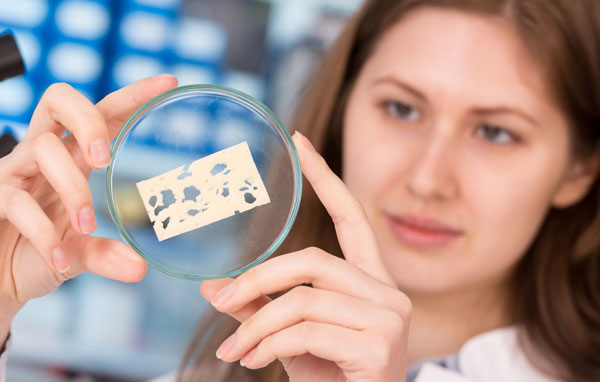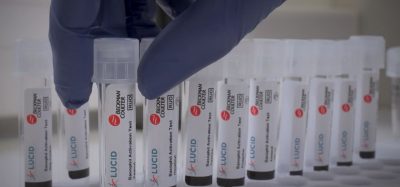Where is the hidden lactose?
- Like
- Digg
- Del
- Tumblr
- VKontakte
- Buffer
- Love This
- Odnoklassniki
- Meneame
- Blogger
- Amazon
- Yahoo Mail
- Gmail
- AOL
- Newsvine
- HackerNews
- Evernote
- MySpace
- Mail.ru
- Viadeo
- Line
- Comments
- Yummly
- SMS
- Viber
- Telegram
- Subscribe
- Skype
- Facebook Messenger
- Kakao
- LiveJournal
- Yammer
- Edgar
- Fintel
- Mix
- Instapaper
- Copy Link
Posted: 3 May 2021 | Katarzyna Niedzwiedzka | No comments yet
Rising demand for lactose-free products has driven the development of a new standardised method for residual lactose determination. Katarzyna Niedzwiedzka explains why…


As more people aim for a healthy and balanced diet, the development of healthy food products has become a main priority for the 21st century food industry.
A growing number of novel products are being created and refined by the sector in response to consumers’ needs and increasing awareness of healthy living. In this context, products that address food allergies and intolerances can be viewed as a distinct category, as this requires adherence by food manufacturers to stricter food safety policies and procedures.
The most common food intolerance is to lactose, a wide-spread condition affecting five to 17 percent of adults in Europe. This significant level of intolerance in the population, coupled with a wider trend of avoiding dairy, has boosted global demand for low-lactose, lactose-free, and associated vegetarian and vegan products.
Methods to enable lactose-free diets
This increased market demand has created the need for fast, reliable and sensitive methods to analyse and quantify lactose residue in foods. Most of the currently available methods have focused on determining residual lactose content in dairy products but have not been broadly applied for other food categories, including vegan and vegetarian products, both of which are popular among people with lactose intolerance.
As a chemical component, lactose is one of the three major disaccharides found in milk, metabolised to glucose and galactose by the enzyme lactase. Any dairy product can potentially trigger lactose intolerance, which should not be confused with intolerance or allergy to (cow’s) milk proteins. Simply put, individuals with lactose intolerance are unable to fully digest the sugar lactose present in milk and other dairy products. Due to this condition (malabsorption), in which the small intestine does not produce enough of the lactase enzyme, a person cannot digest all the lactose consumed from dairy or lactose products. The manifestation of lactose intolerance may include a range of symptoms, such as diarrhoea, gas, bloating, nausea, vomiting and abdominal pain after consuming dairy products.


Laboratories have seen a significant increase in the number of tests for residual lactose in complex products lately
Of course, these symptoms can be mitigated by reducing consumption of high-lactose foods without needing to completely eliminate dairy products from an individual’s diet. However, such a nutrition strategy requires careful monitoring because dairy products play a vital role in a healthy and balanced diet, providing essential vitamins (especially vitamin D) and minerals, including calcium.
In order to respond to this challenge and fulfil the dietary needs of lactose intolerant individuals, food producers are bringing an increasing number of low-lactose and lactose-free products to the market. To meet the demands of consumers, lactose-free products are commercially treated with the lactase enzyme during production in order to reduce or eliminate lactose. However, the enzymatic hydrolysis process is not fully efficient, and the resulting products contain varying amounts of residual lactose.
Regulation
The term lactose-free has only been defined in regulatory terms for infant and follow-on formula with a lactose content ≤10mg or 100kcal in the EU. Some EU member states have set thresholds at a national level for the use of the terms ’lactose‑free’ and ‘low lactose’ for foodstuffs other than formula milk. These thresholds vary from country to country, but the common threshold levels for lactose-free and low-level lactose products are respectively 10mg/100g and 1g/100g.1
Currently, there are no defined lactose concentration limits or regulations governing lactose-free general food products. However, lactose determination is crucial to ensure that the ingredient labelling requirements and label claim of dairy-based food products are met. Under European Commission (EC) legislation, the nutrition labelling of sugars in products is mandatory. However, no standard protocol has been issued by the International Dairy Federation (IDF), the International Organization for Standardization (ISO), the European Committee for Standardization (CEN), or the Academic Quality Assurance Committee (AQAC). Also, no officially approved reference method has been available for the determination of lactose at a low or intermediate level, taking into account the broad range of different matrices to be analysed.
Method development strategy and analytical challenges
A reliable, sensitive and fast analytical method is essential in any commercial testing laboratory. Moreover, sample preparation should not be time consuming and extensive, as it is often critical to deliver fast results to the manufacturer. Striking a balance in method development strategy between testing time and costs, and achieving high-quality results is a complex problem. The main technical challenges in the analysis of residual lactose are detection sensitivity, false positive results and matrix interferences.
Lactose has been analysed using many methods, including mid-infrared detection (eg, AOAC 972.16 – fat, lactose, proteins and solids in milk), photometric methods (eg, AOAC 896.01 – lactose in milk) and gravimetric detection (eg, AOAC 930.28 – lactose in milk). These, however, do not allow for the differentiation between carbohydrates and are not suitable for measuring lactose in products where the content of lactose has been reduced by enzymatic hydrolysis.
Enzymatic methods (eg, AOAC official method AOAC 984.15 – lactose in milk or AOAC, 2007; ISO and IDF, 2002a, 2002b) are often preferred because they are sensitive and easy to perform, and do not require sophisticated instrumentation. However, one drawback of these methods is that free sugars, such as glucose, might cause interference and sometimes the detection of lactose in lactose-free food product samples is not possible. The limit of quantification (LOQ) for enzymatic methods can be as low as 0.01g/100g; however, quantification is more precise and reliable for foods with high-lactose concentration (>1 % w/w). The most common sugar-detection system, after HPLC separation, is refractive index (RI), which allows direct detection of carbohydrates. The sensitivity of this detector is nevertheless quite low, with a LOQ of 0.05g/100ml.2
Currently, high performance anion exchange chromatography with pulsed amperometry detection (HPAEC-PAD) is the most suitable method for carbohydrate (mono- and di-saccharides) analysis and is considered a standard technique. It has been routinely applied as the standard protocol for analysis of sugars in food and feed by industry.
Chromatographic techniques are more specific, but the high unwanted background signal or other interfering sugars, such as lactose isomers allolactose and lactulose, can give false positive results. These isomers can be formed enzymatically or by treatment such as pasteurisation.
Other problems can also occur, including lack of selectivity or interference from other sugars or carbohydrates, such as fructo-oligosaccharides (FOS), galacto-oligosaccharides (GOS) or malto‑oligosaccharides (MOS). A fine chromatographic separation is necessary to avoid co-elution and thus overestimation of lactose content. The other challenge is the matrix type. Samples can contain different levels of fat, protein, fibre and carbohydrates. Infant formula and specific (novel) food additives or ingredients contain a significant amount of protein, amino acids or enzymes, creating an increasing background signal that makes lower LOQs difficult to achieve. Sample extraction and clean-up is critical in residual analysis to avoid this issue.
Some of the leading analytical manufactures have published applications of HPAE chromatography coupled with PDA and mass spectrometry (MS) dual detection, but most of these methods are available only for dairy products. The combination of PDA and MS detections, following HPAE chromatography, allows both the quantification of lactose in low-lactose/lactose-free products and peak confirmation. However, potential interference and co-elution with lactose isomers has been found, proving that the equal molecular weight for lactose and allolactose makes it difficult to distinguish between them. The lactose concentration calculated by the two detection methods was similar, but allolactose levels calculated by PDA have been found to be higher than those found by MS detection.
In the last couple of years, laboratories have seen a significant increase in the number of tests for residual lactose in complex products, such as vegetarian, vegan and free-from foods. The range of recently developed dairy products has been vast too. There have not been many applications of sugar analysis methods focused on the determination of residual lactose in products other than dairy. Laboratories can accurately measure how much sugar (carbohydrates) is in most of the products currently offered on the market because they have standardised methods and reference materials for those types of products.
There is now a need for similar quality analytical test methods and reference materials, along with relevant proficiency schemes, for low-lactose or lactose-free products for routine use in testing laboratories.
A new method development strategy is needed to establish a standardised method for residual lactose determination. The method should be applicable for a range of new food products, taking into account their matrix complexity. Furthermore, this new, official method must fulfil several key analytical demands, including suitability to support labelling of residual lactose and the ability to quantify and qualify low-lactose or lactose-free products. It must also provide sensitive and fast chromatographic separation from lactose isomers, have no interference from oligosaccharides (FOS, MOS, GOS) and be able to check for false positive results. The other important commercial aspects of such an analytical method are undoubtedly cost, time and practical implementation in a testing laboratory.
About the author
Katarzyna Niedzwiedzka is a Development Chemist and member of the Eurofins Technical Development Team for the UK and Ireland. She is responsible for managing projects involving method development, validation and implementation in a busy contract food testing laboratory. Katarzyna works in a cross-functional team whose primary goal is to introduce new methods to expand the range of commercial services as well as to improve the efficiency of existing processes. She holds the title of Chartered Chemist, awarded by the Royal Society of Chemistry, and is an active member of the IFST Midlands Branch committee.
References
1. Scientific Opinion on lactose thresholds in lactose intolerance and galactosaemia EFSA Journal 2010;8(9): 1777 https://www.efsa.europa.eu/en/efsajournal/pub/
2. Sanders, et al. The Determination of Sugars in Dairy Products: Development of a New Standard Method for the International Dairy Federation and the Internal Organization for Standardization Journal of AOAC International Vol. 100, No. 5, 2017





